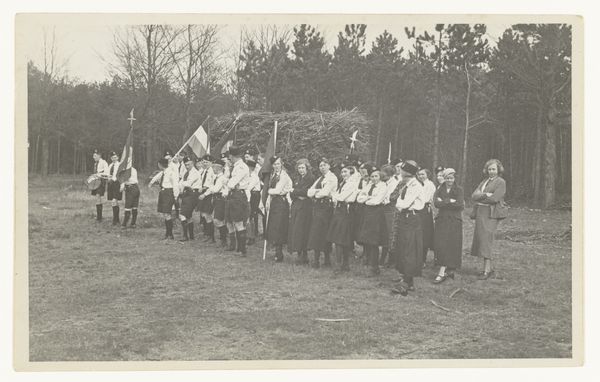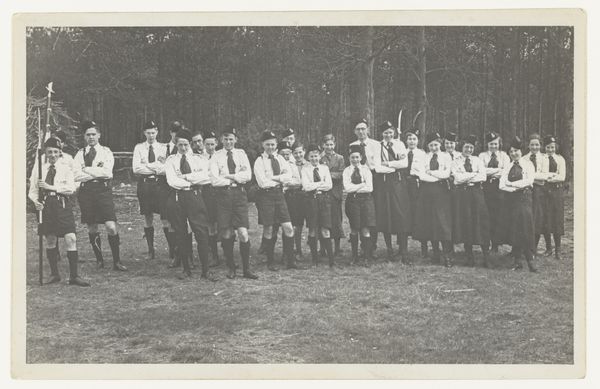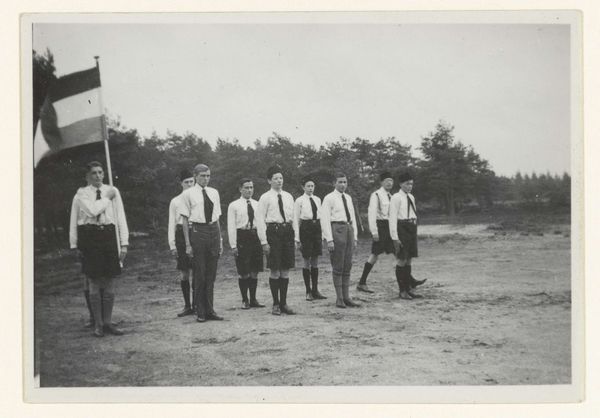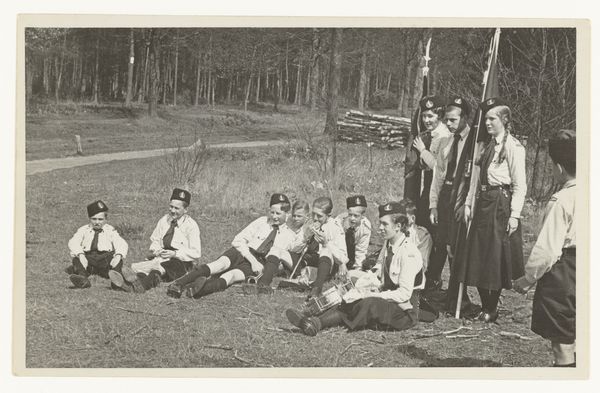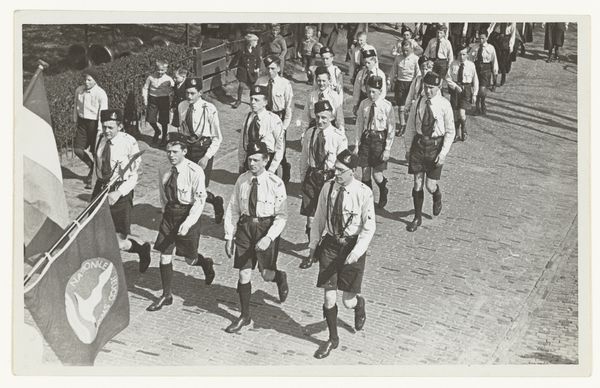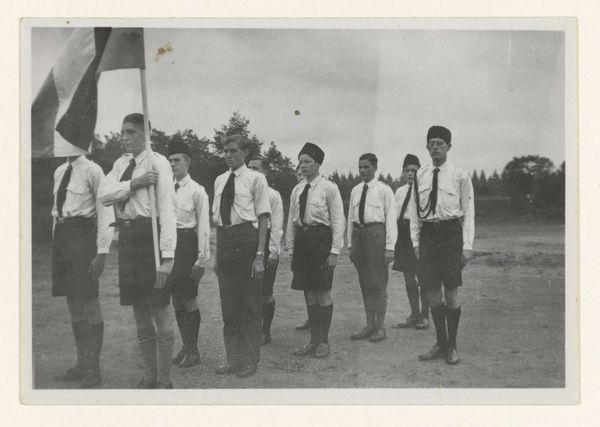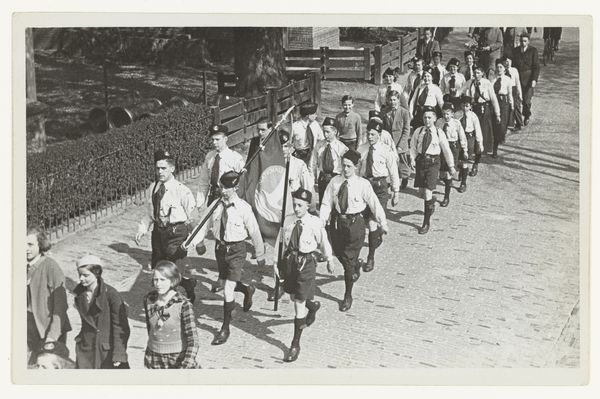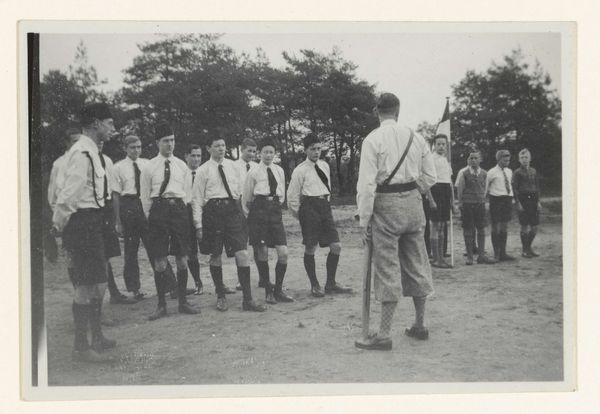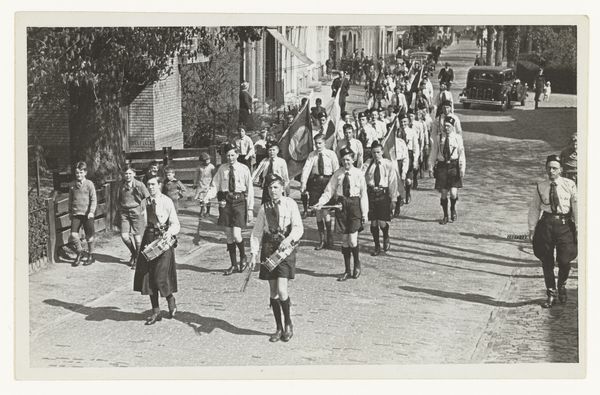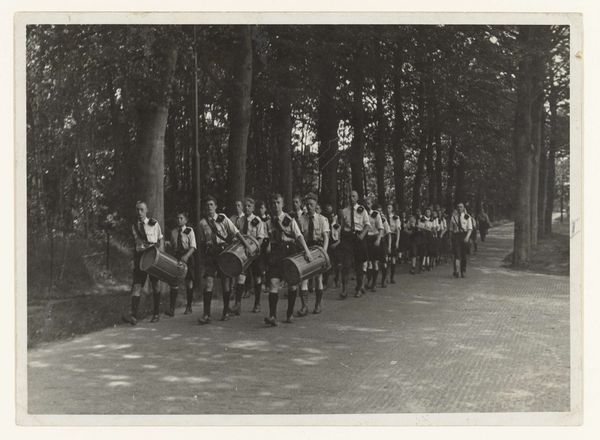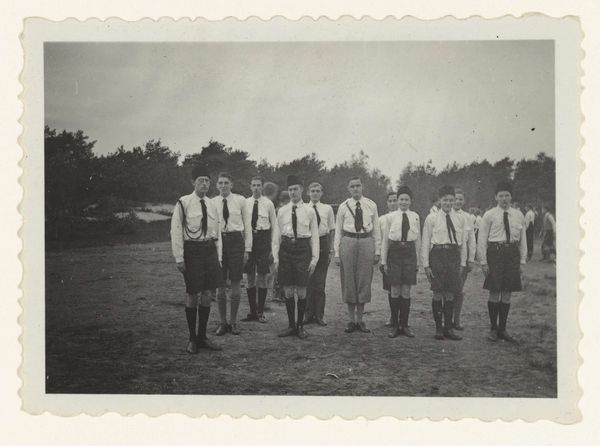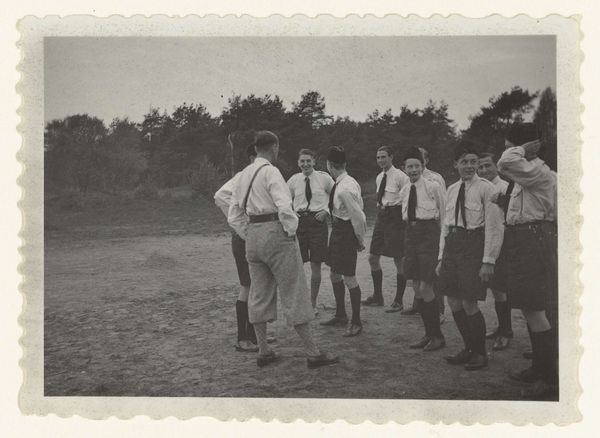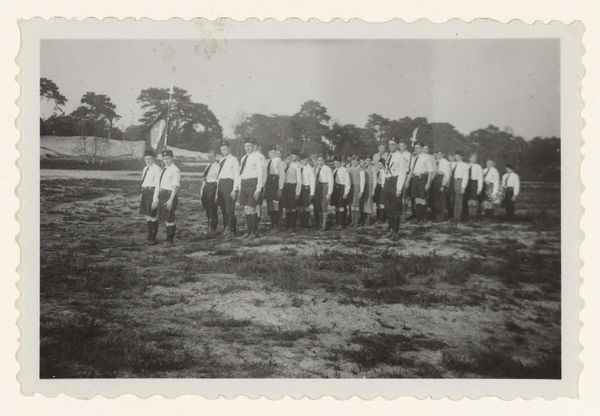
print, photography, gelatin-silver-print
#
portrait
#
print photography
# print
#
archive photography
#
photography
#
historical photography
#
group-portraits
#
gelatin-silver-print
#
history-painting
#
realism
Dimensions: height 8.5 cm, width 13.5 cm
Copyright: Rijks Museum: Open Domain
Editor: This gelatin-silver print by J. Otto, titled "Na afloop van de optocht Jeugdstorm: in de rij" and created sometime between 1935 and 1937, it looks like a group portrait of uniformed children in a field. The overall tone feels...stark, disciplined. How do you interpret this work, especially given its historical context? Curator: The photograph's starkness is precisely what arrests me. We see a line of children, seemingly arranged for inspection. It is titled something like 'After the Youth Storm Parade'. Given the period, it’s hard not to read this through a lens of emerging authoritarianism. The rigid formation, the matching uniforms… these are visual cues speaking to themes of indoctrination and the suppression of individuality. Editor: Indoctrination... that's a strong word, but seeing it framed that way does change my perception. So the 'Youth Storm' is a reference to historical events? Curator: Precisely. Understanding the socio-political context is crucial. 'Jeugdstorm' was a Dutch youth movement modeled after the Nazi German 'Hitler Jugend.' Looking at these children, we must consider how youth organizations were exploited to promote specific ideologies. This work is then not merely a portrait but a historical document reflecting a disturbing trend. What questions does the photograph pose to you now? Editor: It makes me think about agency. Did these children have a choice? What were their families' beliefs? Also, I am struck by how 'ordinary' it looks at first glance – it is easy to miss the more sinister implications. Curator: Exactly. And that "ordinariness" is, in a way, what makes it so potent. It shows us how easily such movements can normalize, and how vital it is to critically examine seemingly innocent images. It highlights the slow erosion of freedoms, beginning often with the young. Editor: It’s a little unsettling to think about how something seemingly innocuous on the surface can reveal deeper and quite disturbing social currents. I’ll definitely consider this a new lens when viewing historical photography. Curator: Indeed, seeing photographs not just as documents but as arguments—rhetorical strategies embedded in specific times and places—helps reveal their complex layers of meaning and implication.
Comments
No comments
Be the first to comment and join the conversation on the ultimate creative platform.
